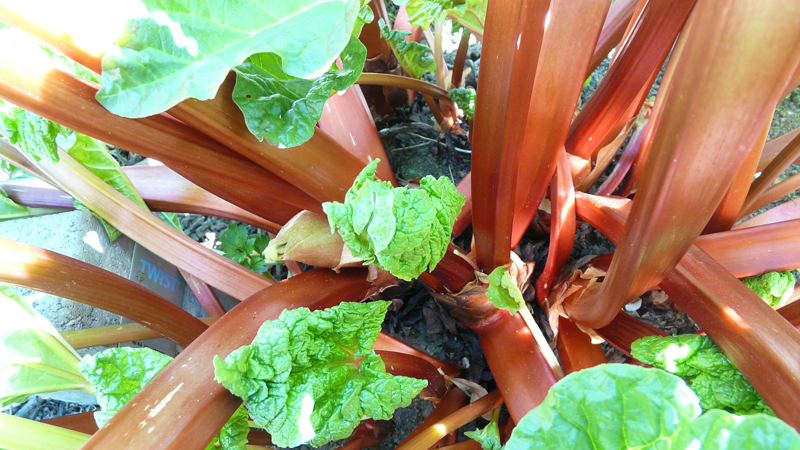The love-it-or-leave-it vegetable Rhubarb

By EILEEN W. NOVOTNY
OSU Ext. master gardener volunteer
CANFIELD
Rhubarb, also called pie plant, was always a staple in my grandmother’s garden, and it frequently graced the dessert table at summer picnics and family gatherings.
It was not always universally popular, however. It prompted a love-it-or-leave-it reaction. My youngest grandson is of the love-it branch with strawberry-rhubarb pie being his favorite.
Rhubarb is a nutritious, easy-to-grow vegetable in home gardens known for its food and ornamental value. This low-calorie vegetable provides vitamins A and C, thiamin, riboflavin, niacin, potassium, phosphorus and dietary fiber. Although it is a vegetable, gardeners prepare it as a fruit.
Rhubarb is hardy. Its leaves can withstand temperatures as low as 35 degrees without damage, and the woody rhizomes and crown will stay in frozen or very cold, dry soil for months without any damage from cold or desiccation.
Rhubarb needs at least 500 hours of winter temperatures between 28 and 40 degrees to properly form new leaf buds. It requires spring temperatures above 40 degrees to break dormancy and to stimulate growth and summer temperatures averaging less than 75 degrees for vigorous growth.
The edible portion is the leaf stalk (also called a petiole), which grows from buds found on the crown near the surface of the soil.
The stalk is harvested as an ingredient for pies, sauces and jams. But rhubarb leaves are toxic to humans and animals due to the high concentration of oxalic acid and soluble salts.
A mature rhubarb plant can easily reach a height of 21⁄2- to 3-feet high and 3- to 31⁄2- feet wide – providing lots of yummy stems.
A deep, rich, well-drained, sandy loam with a soil pH of 6.0 to 6.8 is ideal for rhubarb production. Soil of this nature with a southern exposure produces the earliest crop, while production from heavier (higher clay content) soils is usually later. It grows well here in the Mahoning Valley.
To pick the stalks, grasp them down near the crown and give a slight twist and sideways pull to remove the stalk so as not to break or injure the primary bud.
It’s important to avoid bud damage because each bud will produce several stalks.
Rhubarb is often harvested in May and again in early to mid-July. It can also be picked at random intervals during the growing period to meet the gardener’s needs.
Rhubarb should be allowed to regrow from late July onward without being harvested. As plants decline in August and September, the roots begin to store food reserves, and the plant becomes dormant. These food reserves will provide growth for the following spring.
Consider creating a rhubarb patch. It is low maintenance, delicious, low calorie and healthy. Now, where is the pie?
For information on growing rhubarb in your home garden, go to go.osu.edu/growingrhubarb
For details on preserving rhubarb, go to go.osu.edu/rhubarb
 43
43
